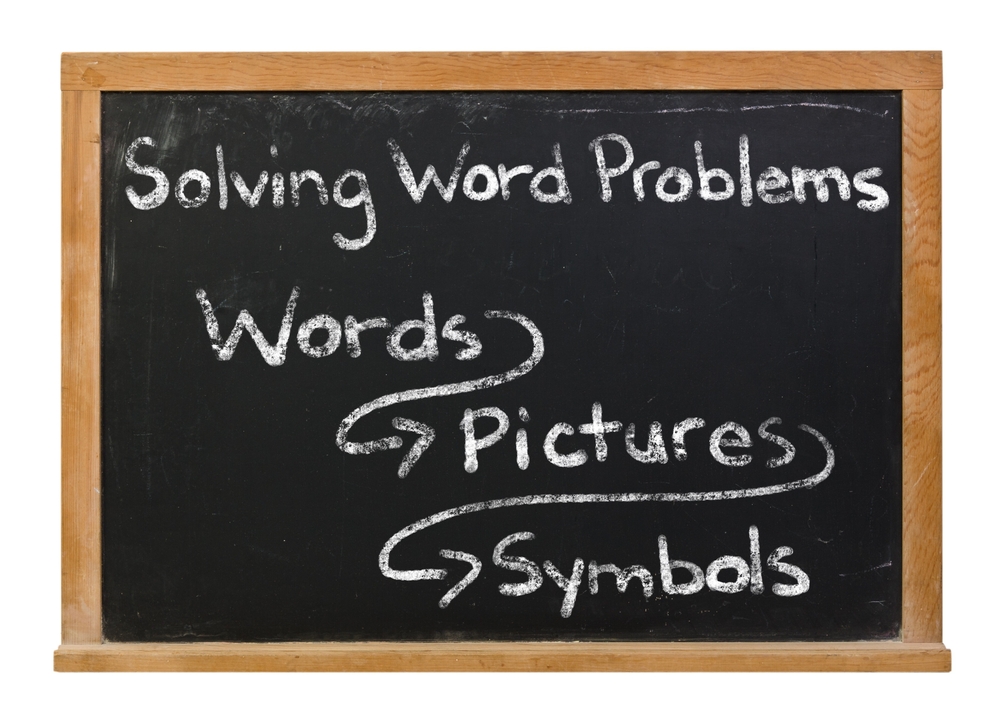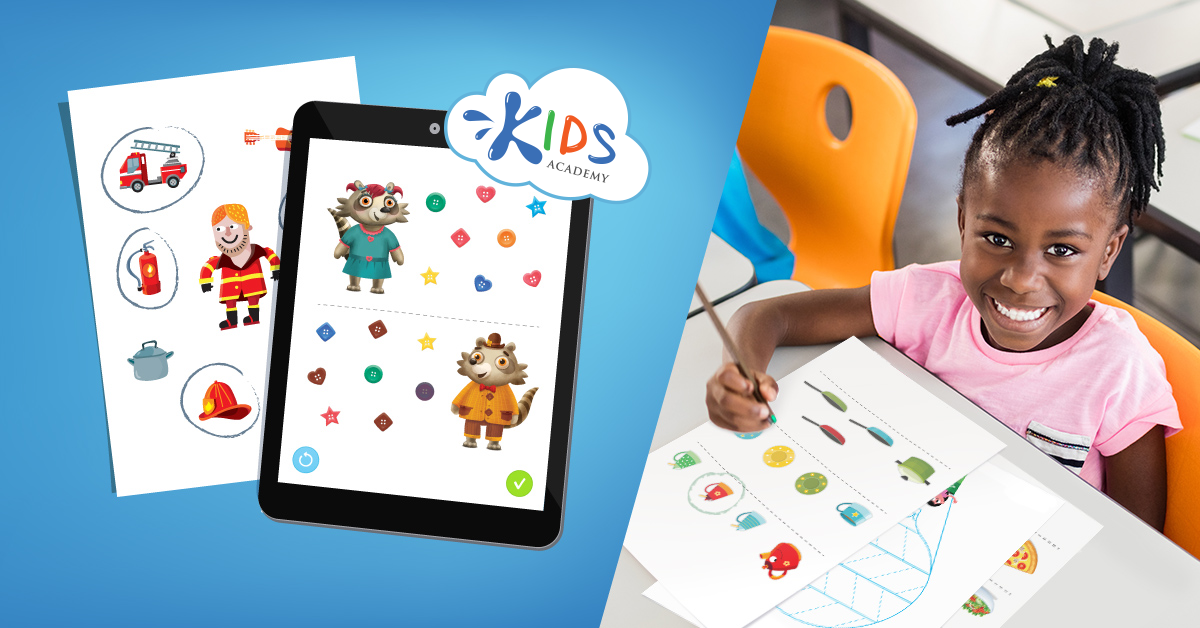Shape identification Normal Math Worksheets for Ages 6-8
6 filtered results
-
From - To
Enhance your child's geometry skills with our "Shape Identification Normal Math Worksheets for Ages 6-8." Designed to make learning fun and engaging, these worksheets help young learners recognize and differentiate various shapes. Catering to first and second graders, they promote visual-spatial intelligence while reinforcing fundamental math concepts. Each activity combines colorful illustrations with hands-on practice, ensuring children not only identify shapes but also understand their properties and relations. These printables offer an excellent foundation for future geometry lessons, making complex concepts easy and accessible. Ideal for both classroom use and home practice, they suit individual or group learning sessions.
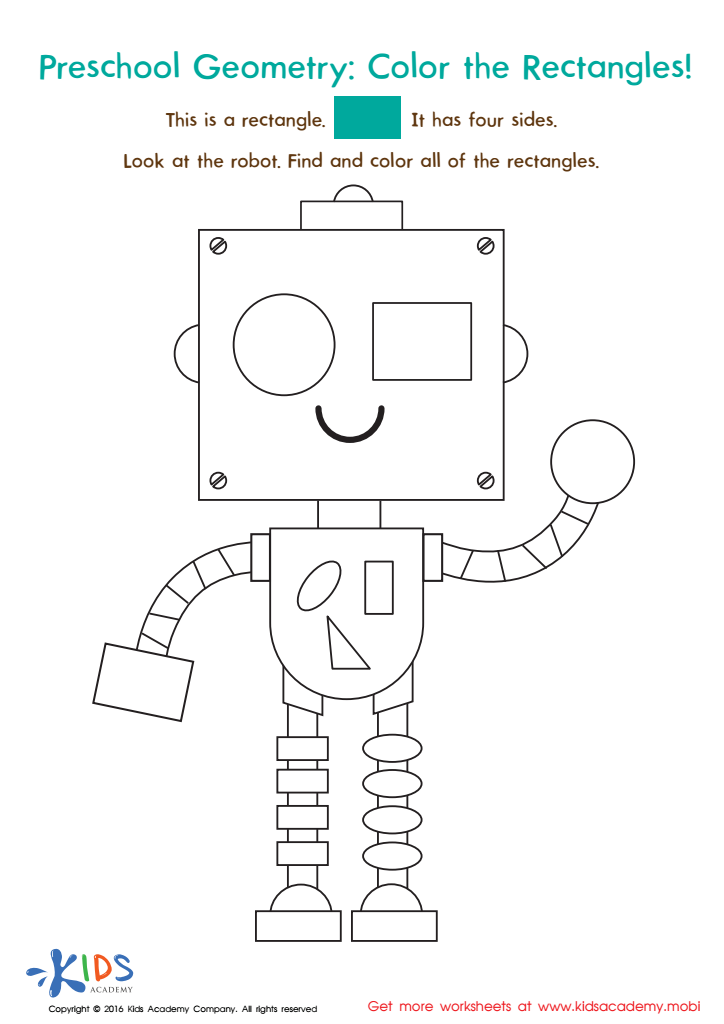

Geometry Worksheet
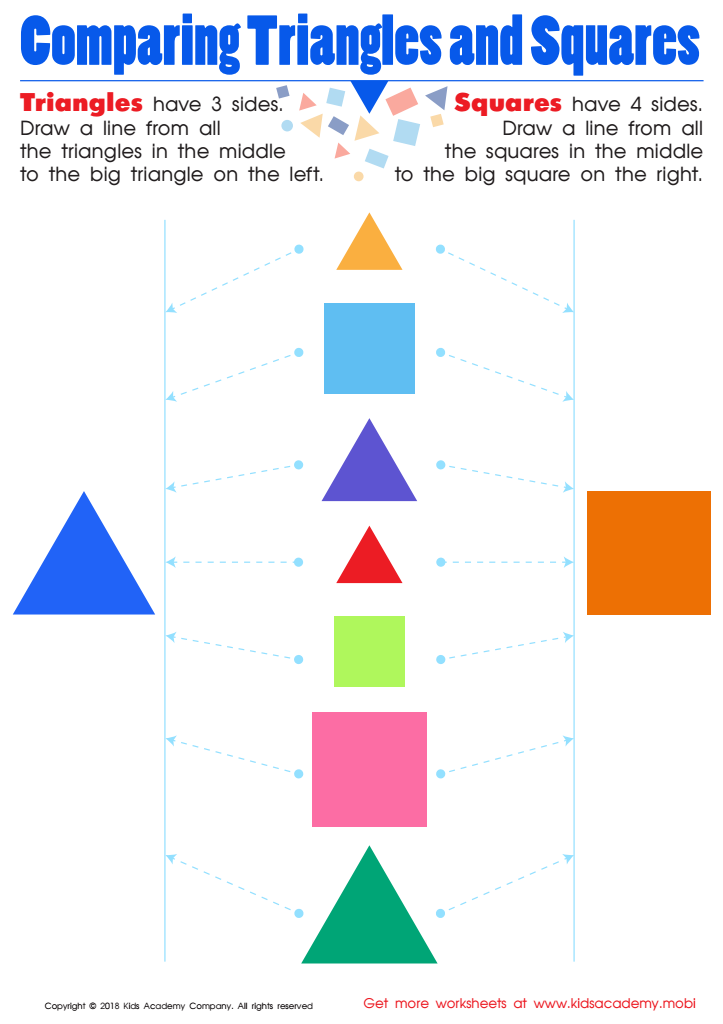

Comparing Triangles Squares Worksheet
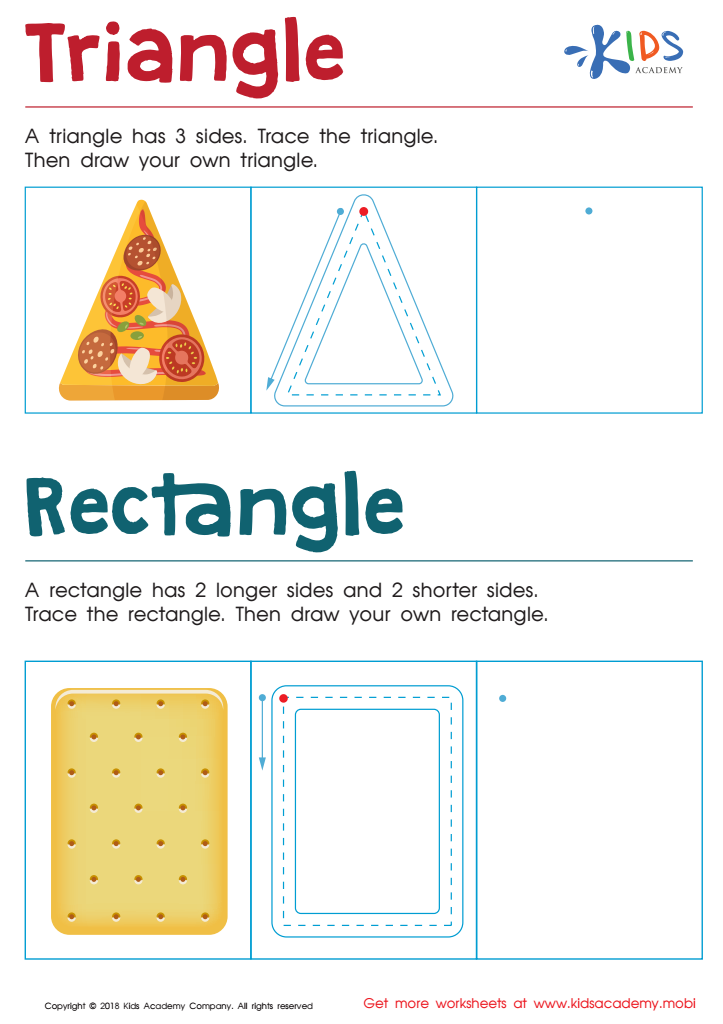

Triangle Rectangle Worksheet
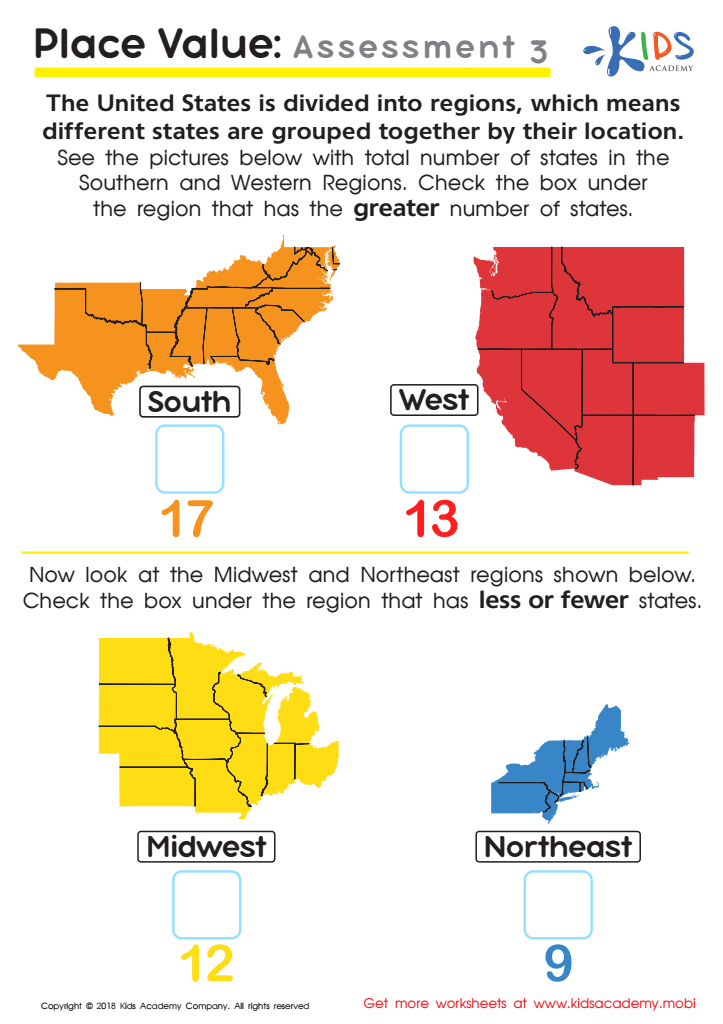

Place Value: Assessment 3 Worksheet
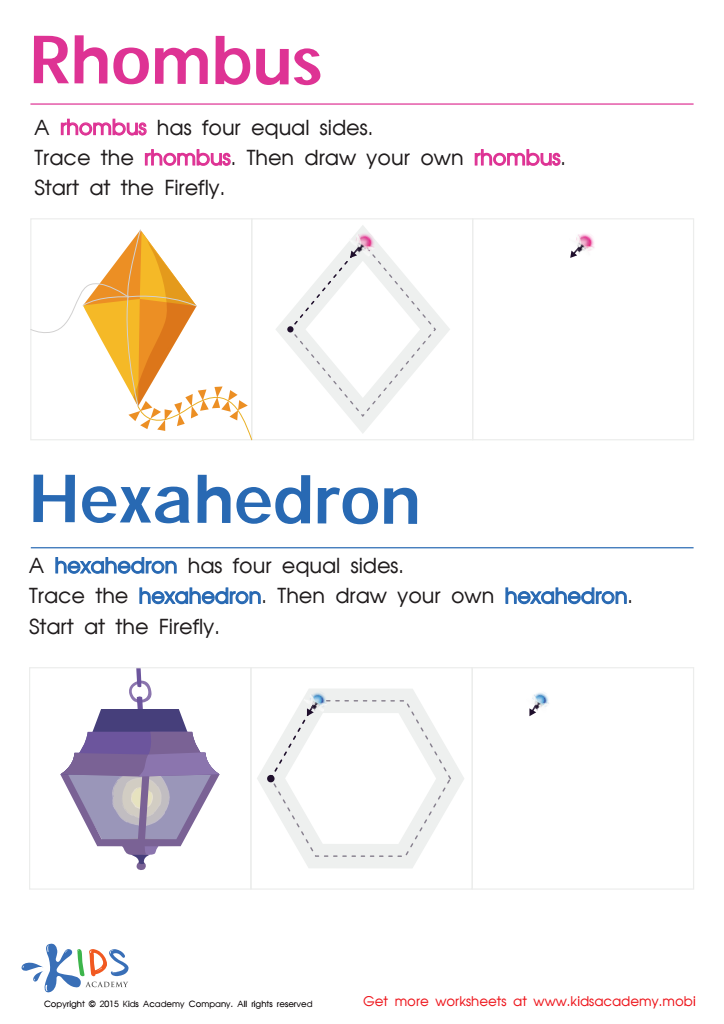

Draw a Rhombus And a Hexahedron Printable
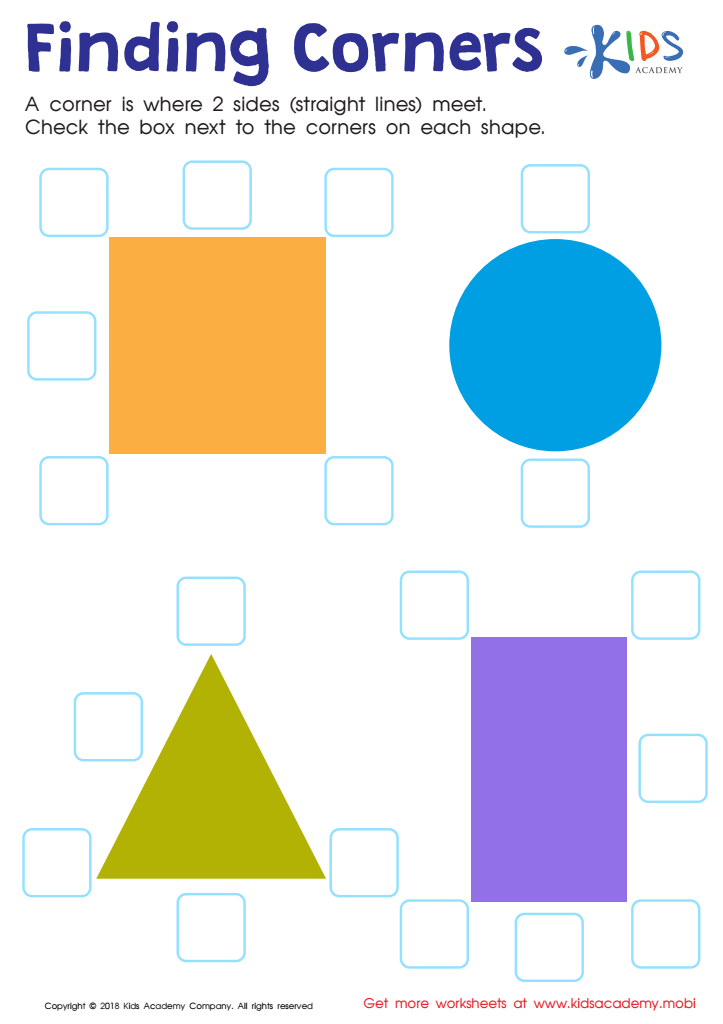

Finding Corners Worksheet
Shape identification is a critical component of early childhood development and plays a significant role in mathematical learning for children aged 6-8. At this stage, children's brains are particularly receptive to recognizing and categorizing shapes and patterns, foundational skills that influence more advanced mathematical concepts.
Firstly, shape recognition helps improve spatial awareness and cognition. By identifying and classifying shapes, children begin to understand the physical world around them, leading to better problem-solving and reasoning abilities. This foundational knowledge lays the groundwork for geometry, a crucial branch of mathematics that they will delve deeper into in later years.
Additionally, understanding shapes enhances language and communication skills. Describing shapes and their properties—including sides, angles, and symmetry—enables children to articulate mathematical ideas more clearly. This verbal proficiency is vital not only for math but for overall academic success.
Shape identification also aids in fine motor skills development. Activities like drawing, cutting, and sorting shapes help hone hand-eye coordination and precision, skills that are important for writing and other daily tasks.
Parents and teachers have a critical role in fostering these skills through engaging, hands-on learning activities. Encouraging children to explore and interact with shapes in their environment enables them to build a strong mathematical foundation, boosting their confidence and enthusiasm for learning.
 Assign to My Students
Assign to My Students





